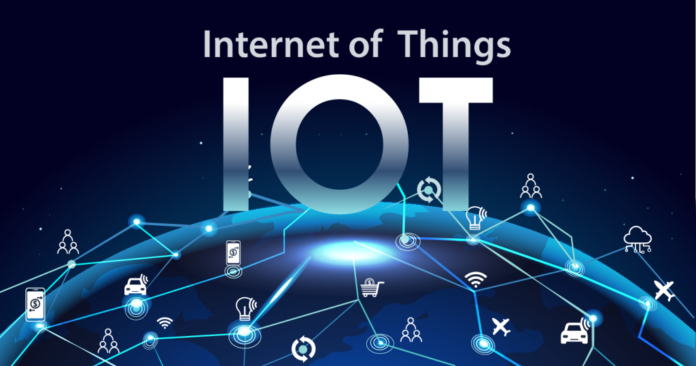The Internet of Things (IoT), smart devices, and intelligent connectivity are all being rapidly embraced by consumers, industrial sectors and enterprises alike. The potential of IoT or smart connected devices was widely accepted after innovative technologies such as blockchain, artificial intelligence (AI) and machine learning were integrated into these devices. With this combination, IoT turned out to be a dominant technology across various sectors, including maritime, communication, transportation, education, and enterprise business development. The advancements in technology helped IoT introduce the concept of hyperconnectivity, which enabled enterprises and individuals to interact with each other from remote locations effortlessly. This helped global enterprises overcome device interconnectivity barriers and remote work situations, especially during the COVID-19 pandemic.
The pandemic accelerated the worldwide adoption of IoT and several other technologies. But as with every technology, it should be no surprise that there are uncertainties and risks associated even with innovative technology such as IoT. However, when compared to other technologies, IoT security must be of higher concern because there will be hundreds of devices on a single network providing services to thousands of people.
Which is why enterprises both large and small must emphasize cybersecurity and fast error resolution in IoT devices even before it is integrated onto a network.
Why Must IoT Security Be a Concern?
In IoT, each interconnected device on a network will be a potential gateway into the IoT infrastructure or personal data. The risks associated with IoT technologies are much higher than any other technologies because IoT is entirely based on interoperability, autonomous decision-making and embedded complexity. This makes security loopholes and possible vulnerabilities a major concern across the network and all devices connected to it. The complexity of the technology as well as the number of devices on a network will decide the level of privacy risks it will face. Also, in IoT, there will be a lot of information in the network regarding the devices connected, the devices could range from simple laptops to thermal scanners and object identification architectures. The data or big data from all these devices will be stored in common storage, which will on most occasions be Cloud storage. Therefore, if a single device tampers it can affect not only just the other devices but also big data and storage as well. Therefore, security professionals will need to ensure that every potential privacy risk is eliminated and that the safety protocols are integrated on every device.
The IoT technology, cloud service models and big data should be implemented in a lawful, ethical, technically and socially satisfactory manner. This will make sure that the service providers such as Amazon AWS or Google Azure will legally, systematically, and technically take care of every challenge and security concern. Because not only must the IoT service provider be efficient but also must help enterprises implement a well-designed reliable architecture across the entire domain. The system architecture must be scalable enough to implement secure technologies such as blockchain for the enterprise, that will help gap the bridge between the physical devices and virtual environments.
How Enterprises Can Enhance IoT Privacy and Cybersecurity
By Leveraging Security in identification and tracking technologies
The concept of IoT was created based on RFID-enabled verification and tracking technologies. A primary RFID system consists of an RFID reader and RFID tags. Because of its ability in recognizing, tracking, and classifying, the RFID architecture has been extensively utilized in logistics, such as container tracking, supply chain management, maritime, etc. An RFID architecture could present adequate real-time data about the connected smart devices in the IoT network, which is extremely beneficial to companies, industries, and enterprises.
Ensuring Security in communications
In an IoT network, devices are interconnected collectively in the network access layer with the help of various communication technologies. The IoT can be considered as a collection of heterogeneous networks, such as RFID systems, wireless sensor or mesh networks and wireless local area networks. The interactions among these networks are imperative to efficiently operate these smart devices as it helps in addressing secure information interchange. Therefore by securing these communication networks IoT devices can be risk-free to an extent and will be able to provide secure, stable, and flexible connections.
By leveraging the cloud service models, IoT service providers can also implement modern communication protocols on the internet such as IPv6. These protocols resolve several issues without the need for an external resource by interacting directly with the internet.
Introducing Security in networks
The virtual phase of the Internet of Things can be termed as a hybrid collection of networks that includes a number of heterogeneous networks. All these networks will require multi-faceted reliability solutions to protect them against not only network intrusions or hackers but also from sudden disruptions or disturbances. The IoT architecture comprises networks that are interconnected with everyday devices, which range from smart gadgets to home appliances and even smartphones. By leveraging the support for these networks from service providers, IoT users can connect their devices with various communication specifications, QoS elements, functionalities, and purposes. This will provide enhanced confidentiality, reliable communication, encryption validations and everything related to efficient security.
Conclusion
Enhanced security among both smart physical devices and virtual architectures is crucial for the efficient operation of IoT devices. By leveraging IoT services from reputed companies, businesses can solve several challenges starting from security and enhanced network protocols to connectivity management and reliable architecture. Therefore, every business that will rely on the Internet of Things must carefully review services offered, privacy protocols and architecture before making up your mind.






















